We Tested Out the Massive, Adventure-Ready Apple Watch Ultra
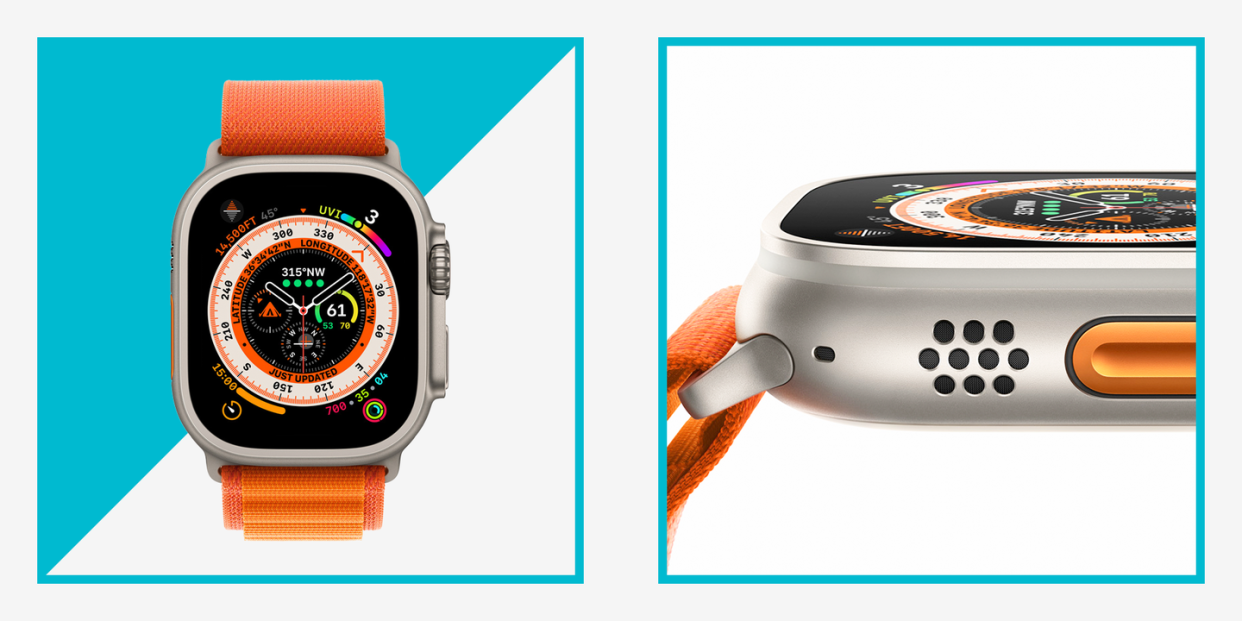
"Hearst Magazines and Yahoo may earn commission or revenue on some items through the links below."
APPLE'S LATEST SMARTWATCH, the mega-sized, feature-stuffed Ultra, is aimed at a very specific type of consumer. You might just be surprised exactly who that is.
Every model of the standard Apple Watch line that followed the first iteration in 2014 has been designed to broaden the consumer base from tech-savvy Apple fans to the general public, up through this year's Series 8. Yes, the wearable is clearly focused on users who consider their well-being important, with a whole slew of general health tracking sensors on their wrist, but these types of features are so universal they appeal to just about everyone, from kids to (and in some cases, especially) their grandparents. That's been a successful strategy for widespread adoption, as the Apple Watch has consistently been the top-selling smartwatch on the market.
But when an object is so universal, that likely means there are some areas at which it falls short—or at least lacks the focus that you would find in a more dedicated device. That's what brings us to the Apple Watch Ultra, the big ticket gadget that captured the tech crowd's attention when it was announced at the brand's annual fall hardware Keynote event earlier this month.
The Ultra isn't a smartwatch for a generalist; it's a maxed-out Apple Watch with a survivalist streak. Apple went all in for the outdoor crowd (think: climbers, divers, ultrarunners), racking up a long list of new specs and features that will make you excited to go on an adventure, especially if you sit and look at the device long enough. From a better battery and dual-frequency GPS to being certified to MIL-STD-810H standards for gear meant to be used in extreme conditions (usually used for military equipment) to adding a depth gauge, EN 13319 certification (usually for dive equipment), and a new app on the way that promises to turn the device into a full-fledged dive computer, the Ultra is loaded.
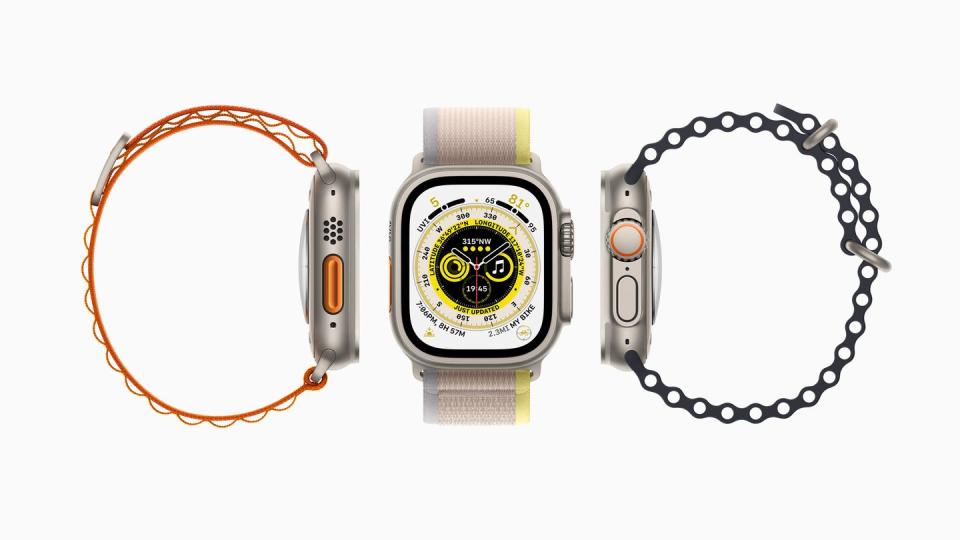
Funnily enough, however, in building out such a wide range of potential uses for hardcore audiences, I think the Ultra is positioned to be the new go-to smartwatch for the aspirational everyman—the type of guy who hasn't exactly hiked the Appalachian Trail or earned his scuba certification, but loves the idea that he could. The Ultra will appeal to wannabe adventurers just as much as it will to the most dedicated outdoor enthusiasts, if not more. And that's a great spot for the gadget, given its wide scope of functions (and its limitations, too).
Count me in that not-so-hardcore group. Outside of a few hikes here and there, some light trail running, and (standard length) marathons, I'm not exactly an outdoorsman. That's the case for most people. But if you were to give me a choice between the Ultra and the standard Apple Watch (or plenty of other smartwatches, for that matter), I'm taking the juiced-up Ultra every time. I had the opportunity to test out the Ultra ahead of its release this Friday, and my experience more than cements that decision.
Apple Watch Ultra Quick Stats
●Titanium Casing
●49mm Case
●36-hour Battery Estimate (60 hours on Low Power)
●Precision Dual-Frequency GPS
●1oom Water Resistant; Recreational Diving to 40m and EN13319 certified
●Always-On Display
●Standard Apple Health features like HR tracking, ECG readings, Blood Oxygen levels, and more
●86-Decibel Siren
●Emergency SOS
●Starting at $799
The Apple Watch Ultra Feels Substantial
Right out of the box, the Apple Watch Ultra feels substantial. The heft of the device was the first thing I noticed. The Ultra has a 49mm titanium casing, a step up from the standard Apple Watch line's aluminum body, which takes up significantly more wrist real estate than the largest Series 8 model, which measures 45mm. Given the increased size and sturdy new material, it's no surprise that when I strapped on the Ultra, I was always aware that I was wearing something on my wrist. There are times when I wear the standard Apple Watch and wish there was more oomph to it. I actually prefer that feeling—it takes me back to slipping on a classy analog watch made of premium materials, designed to do just a few tasks (at most) and do them well. At the same time, the Ultra doesn't feel too heavy; when I was lifting weights or running with it on, I didn't feel like I was fighting against extra resistance. That said, I can see how the Ultra might be a tough wear for those with smaller wrists.
Everything else about the Ultra is maxed out compared to standard Apple Watch models, from the larger Digital Crown (the control knob on the top right corner of the device) designed with deeper ridges to be used with gloves to the more tactile side button beneath it. On the other side of the display—which is twice as bright as any of Apple's other wearables—is the one new functional addition to the Apple Watch design, the Action button.
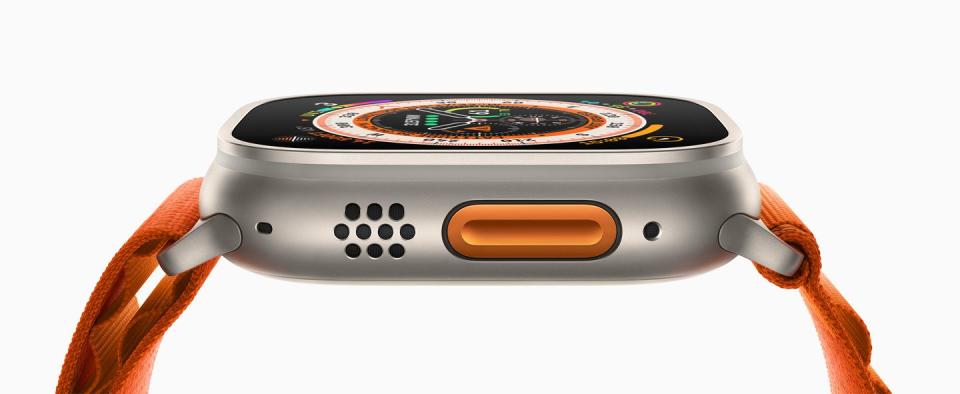
This is the MVP of the new design. You can program the button as a shortcut to your favorite features (mine was set to the Workout app), initiate emergency calls, enable watchOS9's new Backtrack feature, and start the siren, an 86-decibel tone that Apple designed to serve as a backwoods safety feature (the company claims the ringing can be heard from up to 600 feet away).
But it's still an Apple Watch. The design and layout are the same; you'll also have the same health sensors and functionality as a Series 8. That's a big deal. Apple Watch is the best-selling smartwatch in the world, and the Ultra feels more like super-powered version of it than a weird, outdoorsy cousin that doesn't play well with others. If you've used an Apple Watch, you can use the Ultra.
Apple made three new bands specifically for Ultra: the Alpine Loop, the Ocean Band, and the Trail Loop. I was able to try out the former two during my wear test. The Alpine Loop is one piece made out of a tough nylon with a slight stretch, with a "G-hook' that slides into loops of fabric to adjust the fit. The Ocean Band is a more traditional two-piece band, made of "high performance elastomer" and molded with tiny tubes throughout the band for extra flexibility underwater and a titanium buckle and loop to adjust the fit. The Ocean Band was comfortable enough to wear during non-aquatic activities, but I preferred the Alpine Loop—it had just the right amount of stretch so that I could make the Ultra sit right on my wrist without being too tight.
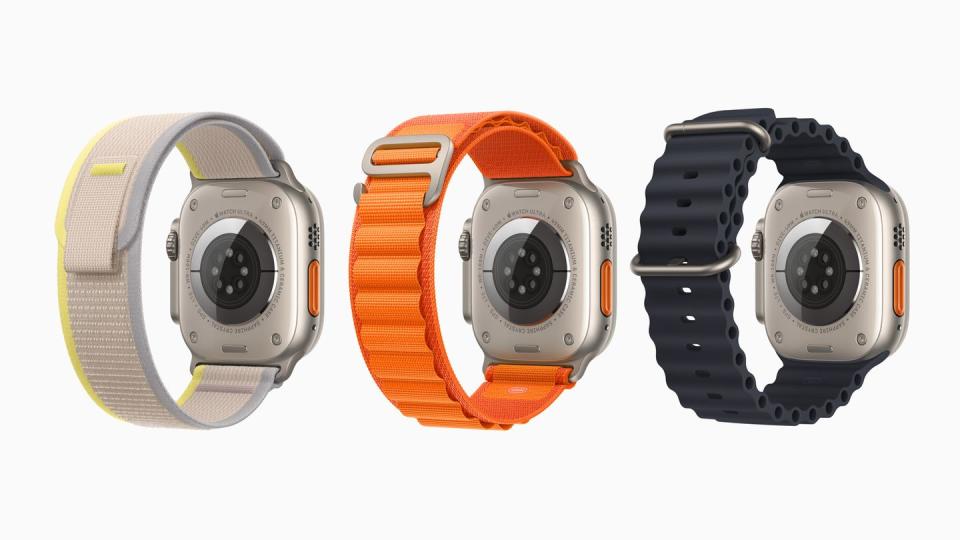
But the best news about bands, especially if you're already an Apple Watch user: You can use the company's other bands on the Ultra, too. I wound up wearing my old bands as often as the new ones, partly to run under the radar as I tested the new device. One quick user note: You will want to wear the Ultra more tightly than you would other Apple Watches. The added weight will make itself known, and you'll notice the casing sliding around your wrist.
Training With the Apple Watch Ultra
Here's my mea culpa: I did not take the Ultra out into the water for a dive. I did not get lost in the woods to see how I might use it to call help or orient my way home. I didn't climb a mountain to test it at altitude in the freezing cold, thin air. What I did do, however, was test the Ultra doing the types of things that I think the typical user will likely spend most of their time and effort. I do think this is a device with more general appeal than you'd think, so my testing stayed general to workouts and activities more within the realm of "normal".
I took the Ultra on what would typically amount to one of my toughest challenges: a 16-mile training run as I prep for the NYC marathon. I’m not a meticulous route planner; rather than following paths set by other runners or painstakingly charting the best possible map to avoid traffic and stoplights, I just kind of wing it. I have a general idea of where I need to get to for a halfway point for the goal distance, then I turn around and go home. For this session, that meant crossing the Manhattan bridge from my apartment in Brooklyn and running up the west side along the Hudson River. To get there, though, I’d have to pass through Lower Manhattan, a dense area with tall buildings—exactly the type of environment the Ultra’s GPS was made to thrive within.
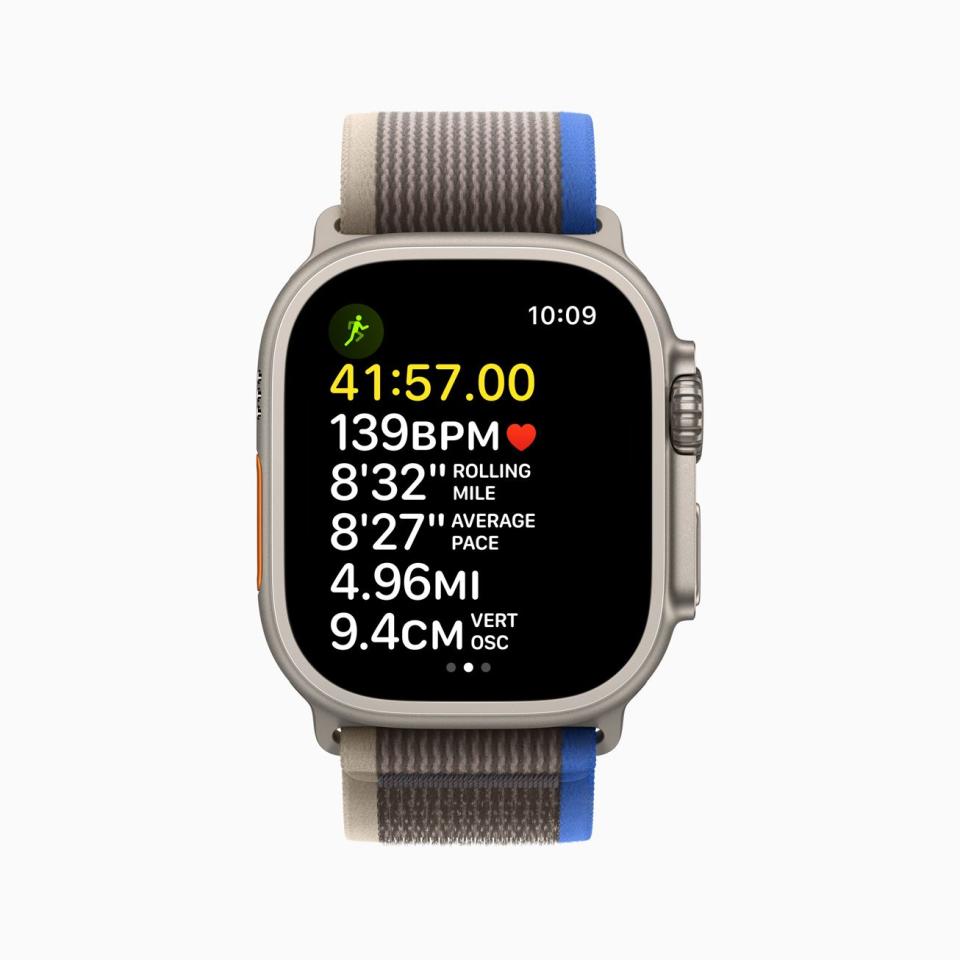
To kick off the run, I started the workout app with the Action button and set a custom workout to a 16-mile session, dropped a Waypoint outside my door, and set the Backtrack feature to track my path (these are new with the Compass app in watchOS 9; think of Waypoints as dropped pins and Backtrack as a tool to leave a digital breadcrumb trail to follow when you need to turn around). I had a general idea where I wanted to go, too, so I set an address for navigation in Maps on my phone, then opened the nav on the watch. I had 88 percent battery when I hit the road.
While turn-by-turn navigation isn’t a new feature for the Ultra, I had a much easier time using the massive screen than with other Apple Watch models. The display is super readable mid-run, even on a sunny day, and it was seamless to switch between different apps and screens using finger swipes and quick button taps. I mentioned how much I like running with the Apple Watch for the stats and bright screen (and even more so with watchOS 9) in my Series 8 review, but it’s so much better with the Ultra. Thanks to the larger display, you can show six metrics on the screen (the standard Watch only allows five), so I was able to get even more data to keep pace.
Once I hit my halfway point, I hit the Backtrack feature to help me get home. This is on the Compass screen, so I didn't get turn-by-turn instructions or a map readout, per se—instead, the Compass moves to keep you going in the general direction, with a goal of staying ahead of the lines on the screen. I wouldn't necessarily use this feature in an urban setting for exact directions, but I could tell when I was going the right way. It seems ideal, though, for anyone looking to find their way back on a trailhead.
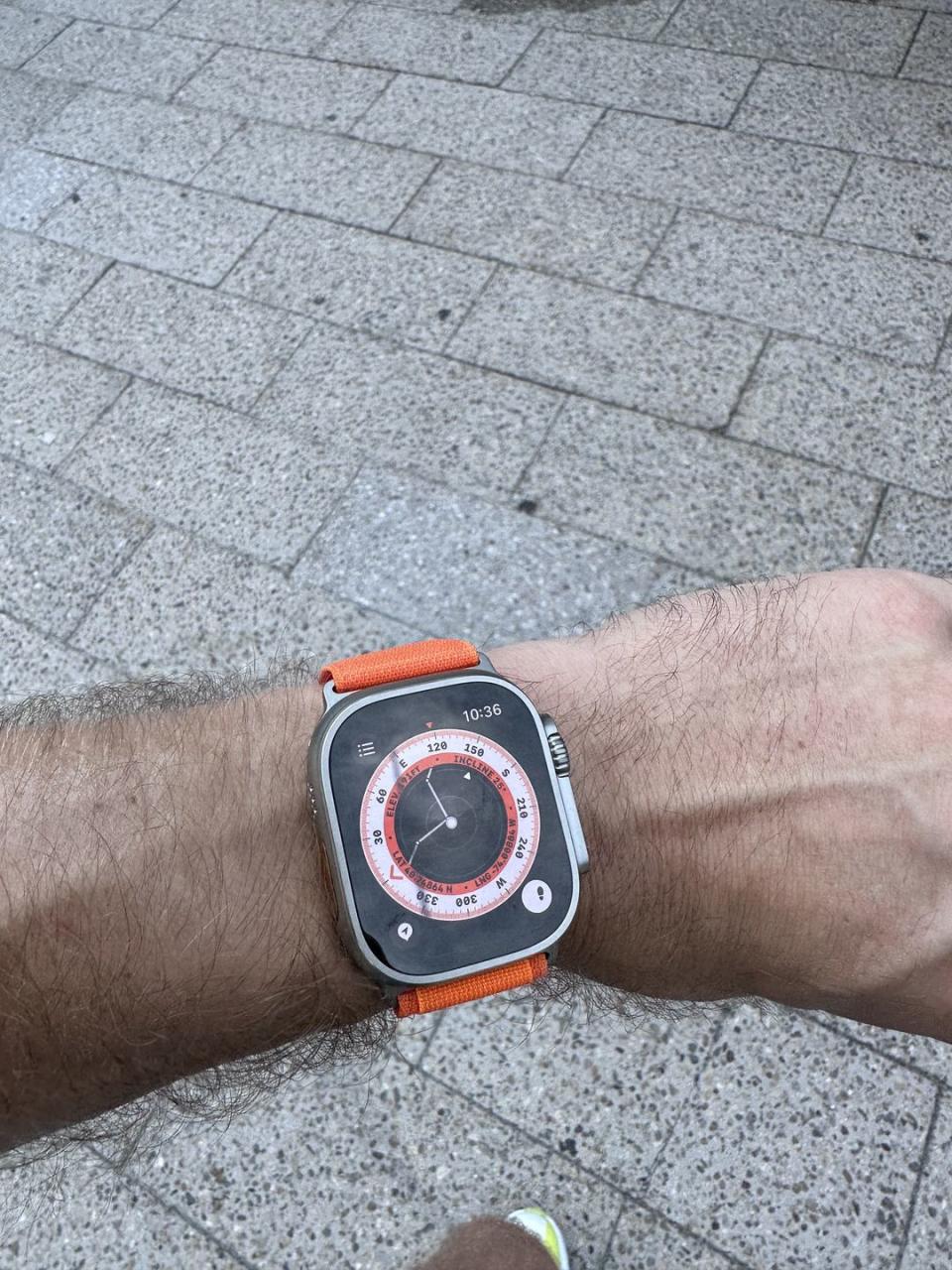
Once I made it back home in one piece from my long run, which took a shade under two-and-a-half hours, I exited all the apps and immediately checked the Ultra's battery level. The power was at 69 percent, a 19 percent drop from the start. Not too bad for a long session—but what I was doing wasn't exactly a marathon. That said, I didn't have to charge the Ultra again for another day and a half. That put it over the 36-hour estimate.
I also took on a few strength training sessions with the Ultra, and had no issues. While watchOS9 does give lifters some custom controls and protocols for intervals and timed sessions, some simple rep tracking, like Garmin's, would be a nice addition. That said, the Ultra was not too much watch to wear in the gym. I was able to do some moves that required wrist extension (think pushups), and had no problem sliding the face to the inside of my wrist so I could use kettlebells in the rack position.
Who Will Love the Apple Watch Ultra
As I stated at the outset of this review, the Apple Watch Ultra marks a departure for the brand in that it has created a device ostensibly aimed at a smaller, specialized consumer base, rather than the widest possible range of demographics. At least that's how things appear in the most basic assessment.
But Apple, by merit of its size and status, cannot announce a product at a gala Keynote event and only appeal to one group of users. The audience is too large. The Apple Watch Ultra is automatically in a different category than peer devices from companies like Suunto or Garmin, two of the most respected brands in the outdoor performance smartwatch space. Ultimately, the Ultra is an Apple Watch, with a highly navigable user interface and most importantly, seamless connection to Apple's iPhones. For more casual users like me, that will make all the difference.
The Ultra's bigger screen, titanium build, and adventure pedigree will make it the Apple's latest must-have device, even at the $799 price tag (as if cost has ever prevented guys from buying big watches). If you're deciding between another Apple Watch model and the Ultra, that cost should be the only consideration (unless you have very small wrists).
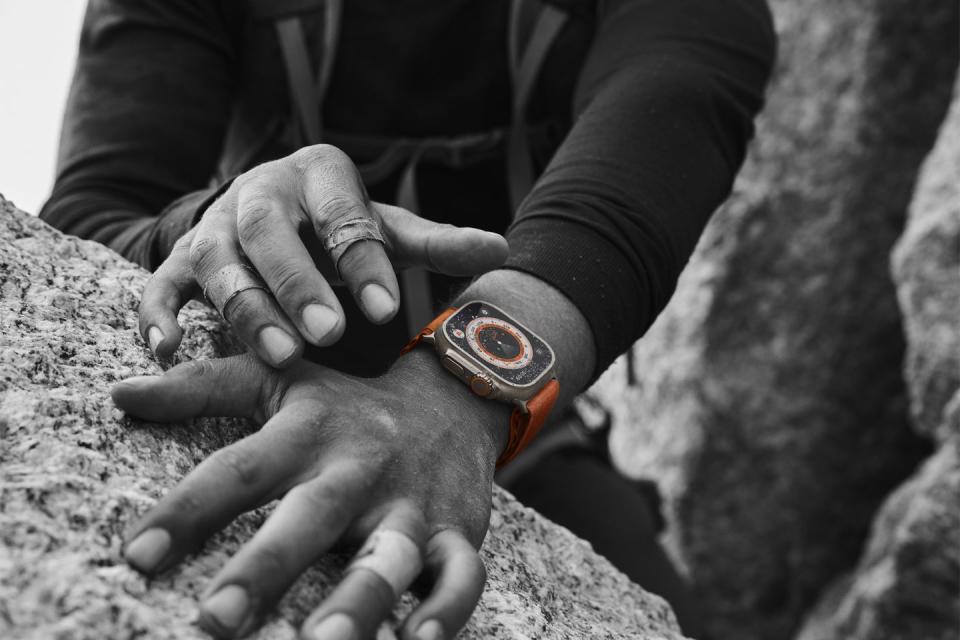
Some outdoor enthusiasts will likely stick with their preferred watch makers. These are adventurers who think of their devices as tools, not gadgets after all; they often depend on their wrist wear to make sure they get home safe from their expedition. In some ways, Apple can't compete on this level just yet.
While many of the Ultra's features are impressive, the 36-hour battery estimate (and 60 on low power), a massive step for an Apple Watch, is still low. Many peer devices have battery estimates that are markedly longer—Garmin's official social media channel seemingly trolled Apple when the Ultra's specs were announced, tweeting that its devices measure battery life in "months, not hours—and battery life is among the most important features for outdoor devices. But I wouldn't be surprised if plenty of these folks try the Ultra. Apple went the extra mile to receive the certifications, and the Ultra is simple to use. While the other brands have their devotees, they can't say they have an Apple Watch.
I've tested and reviewed multiple Suunto and Garmin devices. They have their charms; I particularly enjoy using Garmin's Fenix line. But at the end of the day, none of these smartwatches work as well as Apple's wearables when it comes to the everyday functions that make up the bulk of smartwatch use. That's why I usually gravitate back toward the current version of Apple's wearable whenever I'm not testing something else—it's just the best smartwatch for me as an iPhone user, to wear, and it looks better on my wrist. The Ultra is an Apple Watch. For most people, that will make it the best smartwatch they can get.
You Might Also Like

